#f 82f
Explore tagged Tumblr posts
Text
Forgot I had a manual to the Twin Mustang shoved in a comicbook box under my bed. I'm totes obsessed with the ink illustrations in it + the yummy yummy maintenance data on one of the most epic (non radial*) piston plane engines ever made
*any radial engine is always instantly cooler than anything else in the room 😌
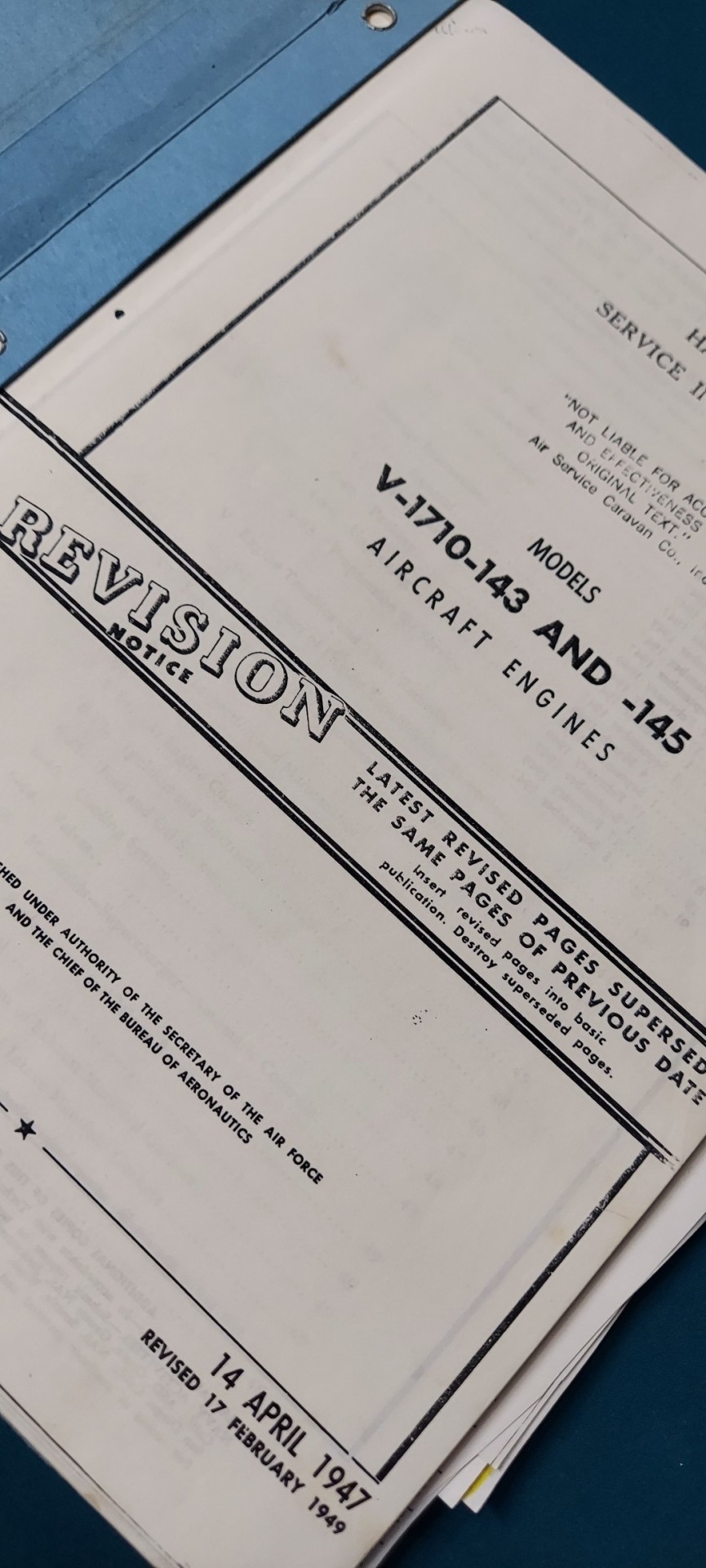
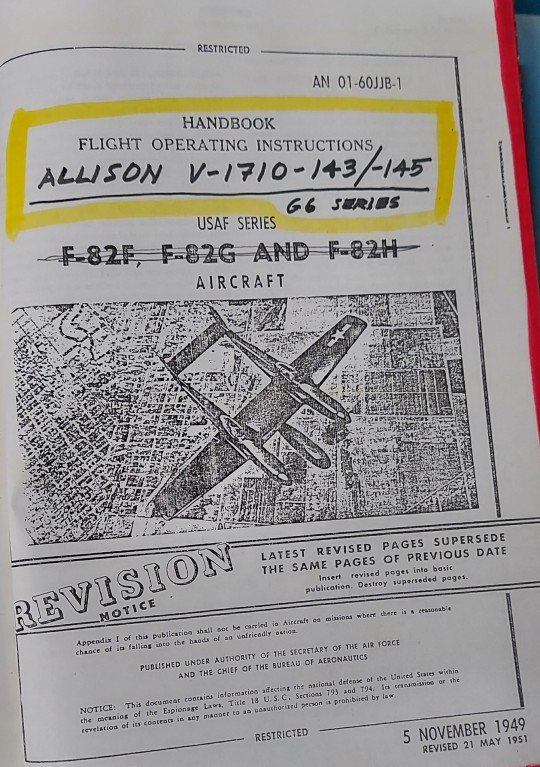

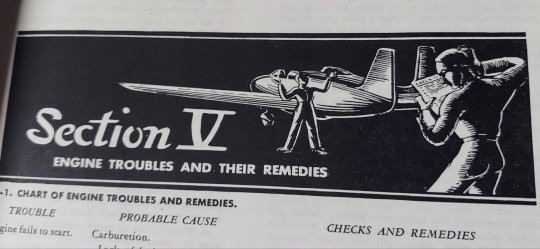


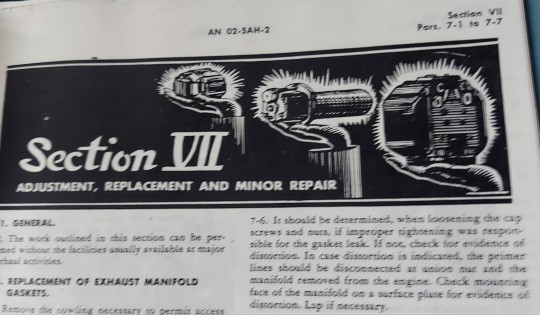

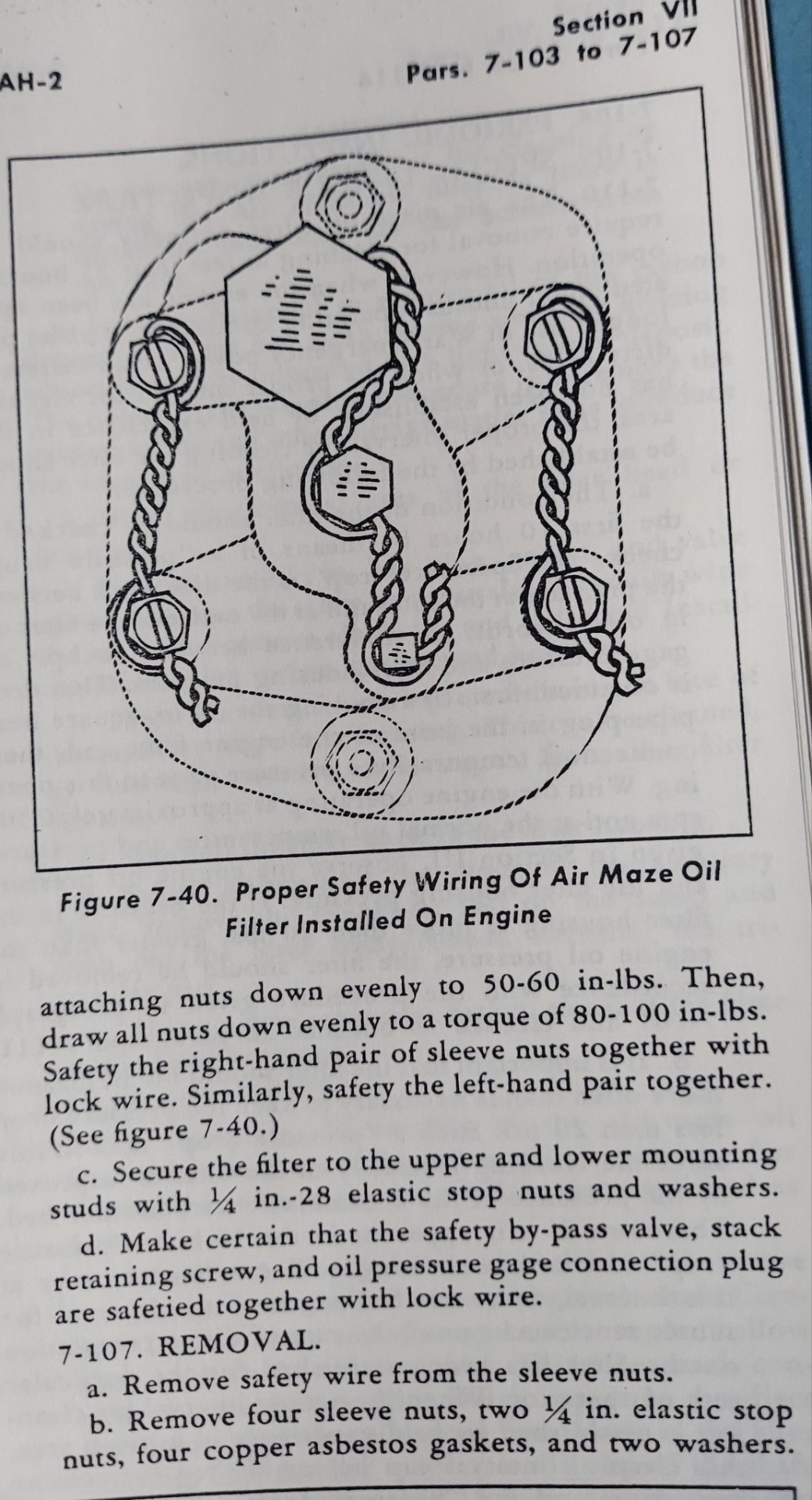
#planeposting#heyyyyy Warthunder yall want? ;3#planes#aviation#aviation maintenance#avgeek#twin mustang#f-82#f 82f#aviation history
20 notes
·
View notes
Text

North American F-82F Twin Mustang's of the 52d Fighter Group.
@AcePilotAV via X
13 notes
·
View notes
Text
you guys want my freak? here
33Ca6F9:4CFFD7D8170010C1ABCa.7FC2DD^5cF15=a^1814f2cbD6i3894^^CC01CFz211807:28C0^c088ADa68::CD3134FmB5b;4714<19Fia;5775tt6Bed24<0A8Bb5h<F=0:F;:248a:<b08b14C090EF0;21:1F=:82F^4;FCD7A90C=373F3FFeF1F1CF0F2FFF8TlE69F3^832B^7C=249.9160aC1B00eAF3^06^<C31FC108<bAA1a8A98:31;bc32F9eE1FDED1;a8N6EC884D0C^=8D64c312F
2 notes
·
View notes
Text
Walking the Via Podienses, France
May 22 - June 22, 2024
In 950, Godescalc, bishop of Le Puy-en-Velay, set off on a pilgrimage to Santiago de Compostella and the tomb of St James. He was the first non-Hispanic to undertake the pilgrimage, leading a large caravan that included members of the clergy, their staff and servants, various nobles and gentlemen, their retainers and men at arms. The ‘French section’ of his route became the Via Podiensis, one of the four routes through France to St Jean Pied de Port prior to the ‘Spanish section’ to Santiago de Compostella.
The Via Podiensis had always been on my bucket list, but I’d always stayed away from the more popular ‘Spanish section’ due to the crowds – maybe one day! One attraction was that the starting point in Le Puy-en-Velay was just southwest of Lyon where my youngest son Alex lived with his partner Nora, and they had agreed to walk the first few days with me.
It would be 32 days and 756 km (470 miles) from Le Puy to Saint Jean Pied de Port in the Basque region near the Spanish border:

I’d be following the Camino way markers and Michelin’s ‘Chemins de Compostelle’ guidebook, with the AllTrails app as a back-up if I got lost. My luggage would be transferred daily between my accommodations (small hotels and B&B’s) in the small villages and towns by La Malle Postale (Le Puy to Figeac) and Transports Claudine (Figeac to St Jean Pied de Port) so I only needed to carry a day back. This allowed me to move fast wearing my running shoes, enjoying the ‘walking’ and not spoiling that with the ‘carrying’ -- although many people I met along the way preferred the ‘full pilgrimage experience’ which included taking all their stuff with them in a large backpack, a wheelbarrow, on a horse or a donkey.
The first seven days were over the Massif Central from Le Puy to Saint-Come-d’Olt at an elevation of 1000-1324m (3280-4343ft), with its steep wooded hills, before moving to lower elevations of 70-650m (230-2130ft) for the remaining 25 days.

The changes in geology and geography lead to significant contrasts in building materials and architecture. The Massif Central is a gigantic extinct volcanic region, so it made sense that the houses over the first seven days were built of Basalt or white granite with slate or red tiled roofs – at this increased elevation temperatures were cool in the 50’s/60’s F. By day eight though, coming off the Massif Central, the building materials had moved away from volcanic rocks to sedimentary, with sandstones (red and yellow) and limestones (yellow and white) becoming predominant. Towards the end of the walk, after Nazerrenz, there were a few days of boring maize fields but at least the majestic Pyrenees were getting closer and silhouetted against the distant sky with the typical Basque architecture starting to creep in – wide, timber framed and chalet style. And of course, the temperature had slowly increased up to 82F at the lower elevations, until I hit some cooler weather as the snow-capped Pyrenees became closer, framing the horizon with some cloud and rain kicking in.
One of the things I love about France is the excellent wine and cheese which I took advantage of EVERY-SINGLE-DAY – over the 32 days there was a changing selection of local varieties. And I was delighted to realize over the first few days that I was unknowingly stumbling through the Aubrac region where aligot, a traditional pilgim fare, is a delicacy – the main ingredients are one third Tome Fraiche cheese and two thirds mashed potatoes to give a stretchy/stringy consistency. I was slightly miffed though to miss the annual aligot festival in the village of Aubrac by just a single day. And lets not forget the excellent canard which followed me for the whole route – sausage, pate, chilli, breast, legs and every permutation thereof.
Walking along old pilgrims routes takes you through so many beautiful medieval towns and villages that grew up over hundreds of years to accommodate all the pilgrims passing through. There were way too many to mention but of particular note were Saint-Come-d’Olt, Figeac, Cahors and of course Conques:.

St Jean Pied de Port, my final stop on the ‘French section’ of the French Camino, and the starting point for those tackling the ‘Spanish section’, needs a special mention too. Located at the foot of the Pyrenees it is constructed entirely of the most beautiful red sandstone, from the fortifications all the way down to the street cobbles.
And of course there’s always a few dilapidated, unattractive towns along the way – Decazeville was a good example. A coal and steel town that has suffered from closures over the years with half the local shops, restaurants and hotels boarded up. But there was one silver lining that I discovered there -- a small micro brewery, Mousses du Rouergue, with a great selection of bottled beers.
I generally enjoy walking alone, so every morning tried to overtake and get ahead of any groups so I could have some peace, especially in the more popular earlier section from Le Puy to Figeac. Nevertheless, I do enjoy meeting interesting strangers along the way and when I’m in the mood, either walking with them for stretches or meeting them in the various towns and villages I stayed in. And although most pilgrims were French, their English was generally pretty good, and better than my French..
It was great to have my son Alex and his partner Nora join me for the first four days from Le Puy to Aumont Aubrac. I always cherish the quality time I can spend with my sons, especially when it’s a shared interest:

On that first day coming out of Le Puy there were many signs warning of someone who would attempt to send us in the wrong direction – and we were lucky enough to meet him (I’m always up for some excitement). We were having a nice chat with what seemed like a completely normal, middle aged guy – until he told us, in a very believable sort of way, that our direction would take us through some flooded areas and that we would need to take an alternative route instead. We thanked him for his dodgy advice and carried on in our planned direction, while having visions of a pit somewhere filled with dead pilgrims.
During the first few days I met Luk of Luxembourg while drinking outside a bar. He was hilarious and told me, in his mischievous way, how he would put on his strongest French accent when speaking English because it made him sound interesting – but of course he told me this in a very tongue-in-cheek way, making the important point, in a subtle kind of way, that the French are superior to the English in so many ways, including the way they speak English.
Tom from Texas, who was walking with his long term mate from Maryland, also called Tom, seemed to have a lot on his mind, deep in thought, as he took fast long strides using his walking poles. I was hoping to hear more of his story later in the walk but he seemed to vanish – I had a feeling he might have got injured and cut his walk short.
I met chain smoking Isabelle, 50’s, outside a bar during the first few days. She was resting up for few days after an injury and seemed a bit rough around the edges, as though she’d seen everything. So her donkey, which had been carrying her stuff, was also happily having a rest for a few days in the local farmers lush field. I wish I could have learned more of her, no doubt, wild story.
Clementine, an attractive single mom, yoga teacher and vegetarian lived in a beautiful old stone house in the tiny village of Valayssac, just outside Espeyrac. She’d converted an outbuilding into an Airbnb, replete with eco-friendly loo filled with wood shavings and seemed to be in a perpetual rush while juggling her single mom, Airbnb and yoga duties. The Airbnb was in a good spot as there seemed to be a shortage of accommodation on this stage of the walk.
When staying in Arthez-de-Bearn I had an interesting meal at Gite de la Boulangerie. The group of about ten included Pierre, whom I’d walked with a couple of times earlier, and a teenager with his guide/support (a big guy you wouldn’t mess with). This teenager was from a troubled background in Paris and a judge had given him the option of either spending time in prison or walking the whole Camino from Le Puy to Santiago de Compostelle with his guide/support. This would give him time away from his troubled environment to reflect on his crimes and the chance of a different kind of future before it was too late. What a great idea.
Vincent, 50’s or 60’s (hard to tell), only spoke French and was carrying his stuff all the way from Le Puy to Santiago de Compostella in some kind of wheelbarrow…behind him. I would periodically bump into him on different days and took an immediate liking to him -- we would have conversations using my little French, waving our arms about and using the Google Translate app. He had a depth about him.
Call me a nerd, but the discovery of the audio identification function in the Merlin bird app changed my life during this walk. It quickly became apparent that there were black redstarts (very handsome and quite rare in the uk) and nightingales (difficult to see) everywhere along whole route. But the best bit was the sound of golden orioles – a beautiful yellow and black bird that I’d no idea inhabited these parts and had always wanted to see since seeing pictures as a young lad. I did get a look at the family of five or six making a noise in the top of some tall trees and suspected it was some kind of otherworldly sign – not sure what of. Watch out for those sign-posts in life, especially when you’re doing a pilgrimage!
0 notes
Text


On the left is a North American F-82G Twin Mustang and on the right is a North American F-82B Twin Mustang. The Twin Mustang is, quite literally, an airplane with two fuselages and, therefore, two cockpits, on a single wing. The idea was that it was a way to have two pilots and thus reduce fatigue during longer flights:
With a pilot in each fuselage, it reduced the problem of pilot fatigue on ultra-long-range missions. The P-82F* and G models carried a radar operator in the right cockpit instead of a co-pilot. Both engine throttles and both propellers were controllable from either cockpit by manually operated levers. The pilot's cockpit on the left contained the normal flight and engine instruments, while the co-pilot on the right had sufficient instruments for relief and emergency operation. A simplified cockpit arrangement improved pilot comfort, including a tilting, adjustable seat to reduce fatigue during long flights. (Source)
*The F-82 was originally designated the P-82; after WWII, redesignated all "pursuit" planes to "fighter" planes.
Nowadays, they seem to accomplish this sort of thing by putting additional seats in just one cockpit, but I guess they were really throwing every idea they had at the wall and seeing what stuck back in those days. And I guess this way you've got both pilots able to see straight ahead, which you don't get in modern-day two-seater fighter planes where the co-pilot (or whoever the second person is) sits behind the pilot.
Unfortunately, the museum doesn't specify exactly why this particular idea didn't stick, but I can only assume it had something to do with the ridiculousness of being completely physically separated from your copilot.
I don't know; while it's pretty cool how one pilot or the other can completely take over while the other one can put his seat back and take a nap, I feel like any radio trouble resulting in the two pilots (or pilot + radar operator) being unable to verbally communicate with one another could be a really big problem. Then again, I don't have any idea how common radio problems like that really are, so for all I know, this isn't actually a concern.
Anyway, these things (272 of them!) were ordered by the US military at the tail end of WWII and didn't arrive until 1946. They were used extensively during the Korean War, but were retired in 1953 in favor of fighter jets.
Fun fact about the Betty Joe (right): on February 27-28, 1947, she flew from Hawaii to New York, a distance of 5,051 miles, which is the longest non-stop flight ever made by a propeller-driven fighter plane. This really was a long-range aircraft.
Below are two additional photographs of the Betty Joe from the museum website where you can see her configuration a little bit better.

#National Museum of the United States Air Force#United States Air Force Museum#aviation history#airplanes#Korean War#Cold War#F-82#Twin Mustang#North American F-82 Twin Mustang#original post
1 note
·
View note
Text
Top 10 Best Fish for Small Tanks: A Comprehensive Guide for Beginners
Hey Hii……………!! If you are looking best fish for small tanks then you are in the right place. Choosing the right fish tank is very crucial but if you follow the below rules then easily you can find the best fish for small tanks. Fish small tanks are easy to maintain you need to only check the water level feeding of fish and a good place for a tank.
Features of a Small Tank
- Firstly see the tank size it's not a much larger size you can choose a 6 to 22-gallon but you need to carefully plan. - Maintain the water temperature because different fish require a different temperature and pH of water. - Some species are not compatible with all fish so check the compatibility of fish. - Select a good fish size especially adult fish so you can put it long time. - The maintenance of fish is crucial so you need to maintain the fish care.
Best Fish for Small Tank
- Betta fish - Neon tetra fish - Guppy fish - Zebra danio fish - Dwarf gourami fish - Cherry shrimp fish - Harlequin rasbora fish - Corydoras catfish - Endlers livebearer fish - White cloud mountain minnow fish So these are the best top 10 fish you can put in your small tank of fish. Betta Fish Betta fish require a minimum of 5 gallons of water and a temperature requires 76-82°F. betta fish mostly prefer the still water. Decorate the plant as if it is in a hiding place because betta fish require the hiding place.

Note – Always select male betta fish for small tank If you set the betta fish is very vibrant and attractive colors and their flowing fins. Neon Tetra Fish These fish are very small and very easy to care for. They require 10 gallons of water and the temperature is around 70-81°F. Neon tetra fish require soft and slightly acidic water.

Neon tetra fish also require a hiding spot. Sop decorates the fish tank accordingly.

Guppy Fish Guppy fish are adaptable in any condition especially these fish are seen for bright and elegant colours.

Guppy fish require almost 10 gallons of water and the temperature is 72-82°F. ph of water is 6.8 – 7.8 is a requirement of guppy fish. Zebro Danio Fish Zebro danio fish is not seen anywhere these are small and very attractive stripes.

Zebra danio require 10 gallons of water and the temperature requirement is 65-77F. special requirement of this fish is to be placed in tank in the group. Dwarf Gourami Fish Dwar gourami are very colorful fish that have very labyrinth organs that allow them to breathe atmospheric air. This fish requires 10 gallons of water and the temperature is around 77-78F.

Put male fish in a tank so looks great and multiple fish not be put in the same tank because their aggression is high. Cherry Shrimp Fish Cherry shrimp fish are very excellent cleaner, their colors are also very attractive. The water requirement is almost 5 gallons and the temperature is 57 -84F.

Note – this fish if you want to put this in a tank then ensure the always water is clean and water is free from copper. Harlequin Rasbora Fish Harlequin Rasbora is a small fish and is best for small fish tanks. It's best for the striking orange-black coloration. This fish requires 10 gallons of water and the temperature is around 72-81F

Decorate the tank as in most of the hiding places. Corydoras Catfish This fish is famous for their scavenging habit and is a small and very peaceful nature fish. Corydoras catfish require 10 gallons of water and the temperature is 72-78F

For tanker requires a soft substrate and hiding spot Endlers Livebearer Fish This fish is similar to guppy fish this is a very active fish

The temperature requirement is 72 -82F and water has a 10-gallon pH range is 7.0 -8.0 White Cloud Mountain Minnow Fish White cloud mountain minnow is a fish is a peaceful temperament and is easy to care fish.

Water is required 10 10-gallon temperature is 62-72F they prefer mostly acidic and neutral water.
Best Equipment for Small Fish Tank
Filter Heater Lighting Substrate Decoration Water quality Filter Always select a good quality filter it's crucial for maintaining the water quality. And select s like that suit a tank of fish. Heater A good and reliable heater is required to maintain the temperature because many fish require stable and good-quality water. Lighting Mostly LED lights are preferred for fish tanks because their effective proper lighting of fish is very important. After all, the health is dependof fish is on lighting. Substrate Always select a like substrate to clean easily and grow. Grave; or sand is commonly used. Decoration This is very important to small fish tanks because decoration is required for home and fish for living also. Provide a hiding spot for the live fish. Water quality Water quality is very essential for fish to live fish longtime. Always clean water and add beneficial bacteria that break down the waste.
Wrap up
Best small fish tank for home and which is the best fish for a small tank all related information is seen. How to decorate a small fish tank that information is also what we have seen today but if you want more related information then comment down below. For More Info visit www.techmeup.in Check it another article also Dazzling 2024 Oak Orchard River Fishing Report Best Let’s See Placket Betta Fish Types In This Year 2024 Best 5 Types of Female Betta Fish Best 2024 Female Betta Fish: A Comprehensive Guide Best 2024 Parrot fish a comprehensive guide Best 2024 Female Betta Fish: A Comprehensive Guide
FAQ
Read the full article
0 notes
Text
Verdant Care
Check for any scrapes or bumps daily, give kiss
1x daily 3 units of Metacam for her arthritis
Variety of freeze dried or preserved bugs because she won't eat live, usally mealworms, superworms, locusts, crickets, and cockroaches
A live superworms or two once a week in hope she will go hunting (change out their oats monthly and provide water 1x a week)
Fresh dark leafy greens every day, arugula growing right now to support this. No spinach (bad for calcium absorption)!
Force feed every other day to ensure eating (I wrap the bugs in the leaves like a burrito)
2x a week calcium with no D3
2x a week multivitamin with no D3
1x a month calcium with D3
Dump water daily, rinse out dish, and run new water through Brita using plastic tubing to get into tank, change Brita filter every six months
Change filter in water fountain in dish daily, can be turned on using an app
Spot clean tank (usually she poops in water (white urates and green /brown poop)) but she is sprinting through her food dish and this requires pickups so no food is left randomly in the tank
Check humidifier levels, should be on medium-high and full of water every day
Cool side between 77°F-82F, ambient middle of tank in mid-80°Fs, (her adult) basking spot should be at 120°F. Temps can drop to lower-70°Fs overnight
Heat light and UV light ten hours on, then off for 14, both on timer
Because her tank is huge, use highest rated heat bulb possible, make sure it has not gone out
UV bulb T8 - 12" change out every six months
I file her nails when they get brutal, holding carefully and doing as you would for a dog
A note: Any random bleeding/scrape I use non-numbing clear Polysporin, I do this for any of the girls and they have lived long lives with no infections
0 notes
Note
It's equal parts ignorance and main character syndrome. I'm USAmerican but for most of my childhood I lived in various Latin American countries, and the temperature variations were wild. At one point I was able to run around outside in 90° f/32°c heat in jeans because I got used to it; moving from that to 32°f/0°c literally overnight was horrendous.
I also spent years living in a city with maybe 20° temp variance year round (not sure of the exact conversion, maybe 7 degrees Celsius) and moving to a more varied climate was hell. Anything below 65f/18c was freezing, anything above 82f/28c was too hot to bear.
What a person is used to, and what their buildings and clothes are designed for, is such an important factor that it legit pissed me off when people apply their personal experience to something entirely different.
Like, forgive me if I'm wrong, but Scotland is normally not super hot, right? I'm guessing air conditoning is uncommon and buildings are designed to retain heat. That makes it so different than Texas or Florida or Arizona or wherever.
I'm sorry people are being dicks.
What is it with some people (Americans, in particular) scoffing at us whenever we're experiencing what is called a heatwave? It just feels dismissive, to be honest. When Texas got that snowstorm, they were justifiably freaked out about it - and yet they cannot seem to think why us Brits freak out about weather that is not really usual for us. For fucks sake, it's April! We shouldn't be getting summer temperatures yet!
Honestly, I believe it’s always Americans because their education system is absolutely fried beyond repair.
You don’t get scoffed at by people from any other country who faces higher temperatures.
276 notes
·
View notes
Text
after nine years of swiveling my chair to face away from fahrenheit wherever it cropped up, and telling my weather apps to use Celsius, I sucked it up and memorized the Celsius equivalents to 40, 50, 60, 70, 80, 90, and 100 F as interpolation-anchors
40 is easy (4 is similar to 40)
50 is easy (10 is similar to 50)
60 is easy (16 has a 6 in it)
70 is easy (21 is divisible by 7)
80F being 27C is hard – can’t find an interesting correspondence – but I know 82F is 28C, so I can work my way down from 82F-2F ~= 28C-1C
90F being 32C is hard, but 91F being 33C is a little easier, as both are the product of two characterful primes (this is an entirely idiosyncratic distinction; I think 2 and 5 are not characterful primes but 3, 7, 11, 13 are)
100 is hard, so I use the easier 104F = 40C
22 notes
·
View notes
Text
Ronnie Bell Following
USAF operational F-82 Twin Mustang, F-82F AF Ser. No. 46-0415, on the ramp at Ladd AFB, just before going to salvage at Elmendorf AFB, May 1953.
Via Flickr
10 notes
·
View notes
Text
I've been posting these on opposite-lock.com and drivetribe.com, and I wanted to share this one here too.
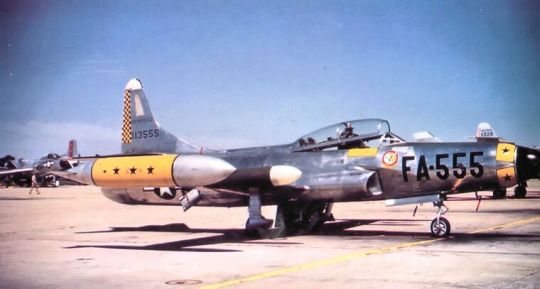
An F-94C belonging to the 27th Fighter-Interceptor Squadron in New York being readied for a flight in 1955. | Photo: USAF
FLIGHTLINE: 112 - LOCKHEED F-94 STARFIRE
Developed from the T-33 Shooting Star trainer, the F-94 was a first-generation jet fighter/interceptor which fought in Korea but was quickly retired.
In 1948 the newly independent USAF released a specification for a radar-equipped jet fighter/interceptor to replace the WWII-era F-61 Black Widow and the early post-war F-82 Twin Mustang. Lockheed responded with a design based on their T-33 jet trainer, which was in turn based on the F-80 Shooting Star fighter. Two existing TF-80C (the original designation for the T-33) were modified with a new nose containing the guns, radar and fire control systems. The original Allison J33 engine was replaced by and uprated J-33-A-33, which was fitted with an afterburner, the first American production aircraft to be so equipped. These two YF-94s retained approximately 75% commonality with the earlier T-33 and F-80. The first flight of a YF-94 was on 16 April 1949, several months after a production contract had been signed.

The second YF-94A, serial number 48-373. | Photo: USAF
PRODUCTION, TEETHING PROBLEMS, AND UPDATES.
The F-94A entered service in May 1950, with 109 produced. This first model was armed with four .50 cal Browning machine guns in the lower nose, and like the F-80 and T-33 was normally fitted with a pair of 165 gallon drop tanks on the wingtips to increase range. Aircrews were not fond of these planes, and there were numerous issues with the early design. The afterburner-equipped J33s were not reliable, with issues plaguing the igniter and flame-holder. These problems caused a number of ground aborts and other in-flight emergencies. The F-94A was also unstable in flight and had poor high-altitude maneuverability. Finally, crews found the cockpit cramped and difficult to enter in an alert or scramble situation. There were also clearance issues with the ejection seats, resulting in several fatalities.
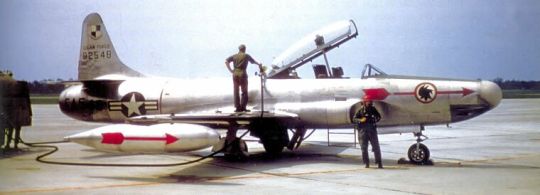
F-94A s/n 49-2548 of the 2nd FIS at McGuire AFB in 1952. | Photo: USAF
Lockheed began deliveries of the improved F-94B in January 1951. This aircraft was outwardly similar to the F-94A, but the cockpit was reworked to improve crew comfort and performance, as well as to correct the fatal flaws with the ejection seat clearance. The J33 engine was much improved as well, becoming a much more reliable power plant. A new instrument landing system (ILS) was added, and a gun pod was developed that would add two additional 50 cals under each wing, bringing the total to eight guns. As the new F-94Bs were introduced, older A models were returned to Lockheed and updated to the B standards. As newer aircraft replaced the F-94 in service, the planes were passed down to Air National Guard units, where they served until the late 1950s.

An F-94B from the 61st FIS at Selfridge AFB in Michigan, some time in 1952.
SERVICE AT HOME AND ABROAD.
As befitting the F-94s intended role as an interceptor, the aircraft were mostly flown under Air Defence Command auspices, equipping some 26 squadrons. The F-94s replaced older F-82F Twin Mustangs, which had been hurriedly pressed into service after a 1949 display by the USSR of the Tu-4 (NATO code name "Bull") bomber, a reverse-engineered copy of the Boeing B-29. The F-94 turned out to be somewhat inferior to the Twin Mustang however, having shorter legs than the F-82, as well as relying more on ground-based radar to guide them to targets. Despite these shortcomings, procurement of the F-94 continued, with air groups around the country replacing F-47 Thunderbolts, F-51 Mustangs, F-80 Shooting Star and F-86A Sabre day fighters with F-94As and later updated B models. Three Air National Guard (ANG) units, the 121st FIS (DC ANG), 142nd FIS (Maine ANG), and 148th FIS (Pennsylvania ANG) received F-94Bs and were placed on active duty to guard the Washington, DC airspace during the Korean War.
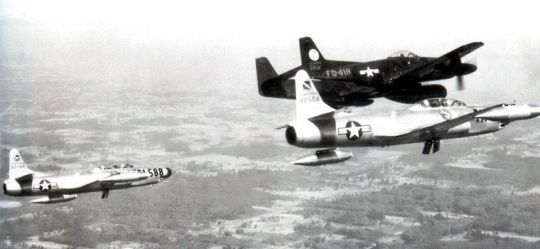
Two F-94s fly in formation with an F-82 Twin Mustang in 1950. | Photo: USAF
F-94s also saw deployment to Japan and South Korea as the Korean War heated up, with the first F-94Bs arriving in Japan during March of 1951 to train pilots on the new jet. Flights of Soviet MiG-15 fighters over Seoul in December of that year saw some of these aircraft being detached to Suwon Air Base to defend the South Korean capital. By March of 1952, F-94s from the 319th FIS were flying escort missions for B-29 bombers. Early encounters with Soviet MiGs indicated that they had been equipped with radar warning receivers, as the communist fighters would begin evasive maneuvers once the US aircraft locked-on. USAF F-94s were credited with several kills during the conflict, including the first jet-versus-jet night intercept. After the 1953 Armistice, F-94s remained in South Korea and Japan to fly air defense missions, finally being replaced in 1954 by radar-equipped F-86D Sabre Dogs.

An F-94B belonging to the 68th FIS at Suwon Air Base. This aircraft suffered an engine fire in December 1952 and crashed, killing both crew. | Photo: USAF
YF-97A STARFIRE.
Even before the F-94 started seeing service, Lockheed began work on a massively redesigned and improved interceptor. This new plane, tentatively designated the YF-97 Starfire, retained the fuselage of the F-94, but had a new, thinner wing, along with swept horizontal stabilizers. The troublesome J33 was replaced by the Pratt & Whitney J48, a license-built copy of the Rolls-Royce Tay turbojet which powered the Dassault Mystère IV fighter/bomber. The fire-control and radar systems were also upgraded, resulting in a larger nose. Also fitted in the nose were four trays of six 2.75" FFAR, which fired out through four fold-in doors. The Browning machine guns were deleted. In service, firing these rockets tended to blind the crew, and there were issues with the engines ingesting rocket exhaust and flaming out. In response, pods were developed that fitted to the wing along the leading edge, each of which carried 12 FFAR. The nose trays were then left empty most times. This new aircraft was eventually designated the F-94C, gaining the nickname Starfire, which eventually became applied to earlier models of the F-94 as well. Lockheed began delivery of the F-94C in 1954, and they were quickly incorporated into the Semi-Automatic Ground Environment (SAGE) air defense system. As Starfire deliveries ramped up, the earlier F-94Bs were passed down to ANG units, then were retired.

One of the YF-94C prototypes with the nose rocket doors open. | Photo: USAF
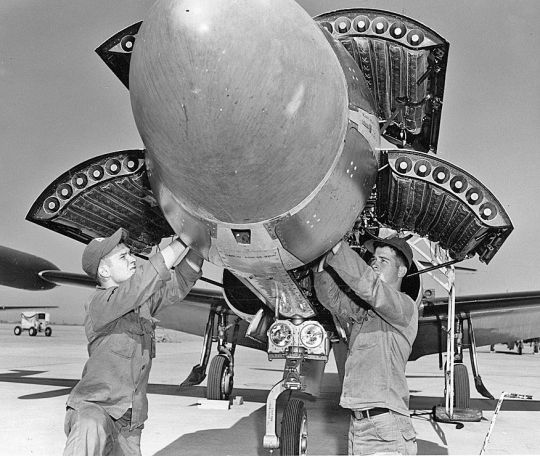
An F-94C, with its FFAR loading trays open, being services by two USAF Airmen. | Photo: USAF
STARFIRE ECLIPSED.
Despite being an advanced aircraft at the time of development, the rapid pace of aviation in the 1950s soon saw the F-94s made redundant by more capable interceptors like the F-86D Sabre Dog and the F-89J Scorpion. The Starfire was removed from front-line USAF service in 1957, after just 3 years, and the type was phased out of ANG service in 1959. A number of aircraft have been preserved around the US, among them a YF-94A prototype at Edwards AFB which is awaiting restoration, two F-94As, and 11 YF-94C and F-94C examples.
PRUNED BRANCHES OF THE FAMILY TREE.
In addition the fighter/interceptor variants, Lockheed also pursued other missions for the F-94. F-94C s/n 50-963 was retained by Lockheed for a possible photo recon variant. The EF-94C ("E" for Exempt rather than "R" for reconnaissance because it was a self-financed research program) saw the radar and missiles replaced by cameras and sensors. The USAF was not interested, and the plane was later scrapped.
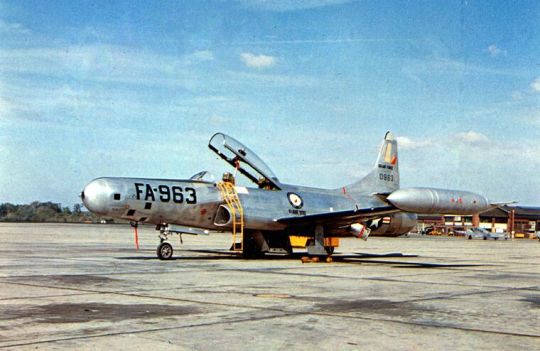
The EF-94C, possibly at Lockheed's plant. | Photo: Lockheed Corp.
In January 1951, Lockheed received a contract for 113 single-seat fighter/bombers based on the F-94C. The existing fuselage, tail and engine of the Starfire would be mated to a new, larger nose containing 8 .50cal machine guns and a new wing that was 50% larger. The fighter/bomber, designated the F-94D, would be capable of carrying 4,000lbs of bombs and rockets, and would have had a refueling probe for increased range. Two F-94Bs were modified with the new nose and wing to trial various configurations for the YF-94D. The USAF canceled the F-94D project on 15 October 1951, preferring that Lockheed focus on the F-94C interceptor instead. One of the F-94Bs from the program, s/n 51-5500, was later bailed to General Electric for use as a testbed for the T-171 (later M61A1) Vulcan cannon.

F-94B s/n 51-5500, late of Mass. ANG, modified with an experimental nose and wing for the stillborn F-94D program.
#aircraft#aviation#avgeek#cold war#airplanes#cold war history#airplane#usaf#coldwar#aviation history#korean war#1950s#1950s aesthetic#50s#the fifties#Lockheed#f94#f94 starfire#interceptor#1st gen
31 notes
·
View notes
Note
I'm considering getting a leech for a pet, but I live in Arizona so for around half the year our house temp can be up to 82F.
I've read that leeches should be kept in 63F, or anywhere from 40-80F, and I wanted to know if it would be possible for me to keep a leech. I don't want them to live in a stressful environment, and I think they would get hurt if I got a tank chiller.
Could you set up a fan to blow on the tank during the summer? That might cool it down enough.
Although leeches do prefer cool, dark places, they’re very adaptable and their natural ranges put them in places that get pretty hot during the summer.
H. verbana (the most commonly kept pet leech species) can live as far south as the Mediterranean, so they would probably be alright in warmer weather. Macrobdella decora (the North American medicinal leech) live from Canada to Mexico, so some populations can be found in subtropical areas. Buffalo leeches are fully tropical and would love 82 F temperatures!
So, all things considered, I think it’s definitely possible for you to get a leech! Just have a fan handy for days where it gets really hot.
19 notes
·
View notes
Text
Well the difference between 25 and 30C is 9 degrees Fahrenheit, it's 77F vs 86F, that's noticeable. What they're saying is you can feel the difference between 81 and 82F but they would both measure as 27C (27.2 and 27.7 respectively on a thermometer. As a Canadian who uses C and has only ever used F for cooking temperatures (because backing something 350 just sounds better than baking it at 176) the Americans actually have a point here, especially with the fevers,
absolutely obsessed with the way Fahrenheit is legitimately a superior temperature measurements for day to day life than celsius (more precise, accessible, and understandable) but ppl refuse to admit to it bc they’re so caught up with the “silly americans refuse to convert to metric” gag
171K notes
·
View notes
Text
Samplism celtic harp

#Samplism celtic harp for mac
#Samplism celtic harp free
It appears on Irish and British coins, the coat of arms of the Republic of Ireland, Montserrat, the United Kingdom and Canada as well as. In Ireland and Scotland, it was a wire-strung instrument requiring great skill and long practice to play, and was associated with the Gaelic ruling class. It is known as clirseach in Irish, clrsach in Scottish Gaelic, telenn in Breton and telyn in Welsh. "RHODES" is a registered trademark of Joseph A Brandstetter. 22 Strings Harp Irish Celtic Highland Solid Rosewood Natural Finishing Lever Tuning Key Extra Set included 33' inches tall Roseback 3. The Celtic harp is a triangular frame harp traditional to the Celtic nations of northwest Europe. Loopmasters or its Suppliers do not accept any liability in relation to the content of the sample or the accuracy of the description. Any goodwill attached to those brands rest with the brand owner. Loopmasters do not have (nor do they claim) any association with or endorsement by these brands. What's New in Samplism 1.7 Customizing Tag Shortcuts Filtering Tags in the Tag List view Writing a memo for multiple samplesand More.Samplism is a revolu. More levers lets you play in a wider range of keys without re-tuning strings. Zilveren Harp, Edison Award en Dutch MOBO Award. Most of our Celtic lever harps have sharpening levers on each string certain models only have levers on C's and F's. 29-04-2000 Organisatie Samplism opgepakt na organiseren illegale Koninginnedagparty, Shoarma gallery Eindhoven. For example references to instrument brands are provided to describe the sound of the instrument and/or the instrument used in the sample. Clare Celtic Harpists - Hire one of our fantastic Scottish harpists, or clarsach players for your wedding or event. Also called folk harps or troubadour harps, lever harps are distinguished by the 'lever' mechanism that lets you change the pitch of each string.
#Samplism celtic harp free
These Royalty Free recordings of the Celtic Harp are optimised with the closest attention to detail and have been recorded using tube Pre-Amps and Mics on 96kHz.Īny references to any brands on this site/page, including reference to brands and instruments, are provided for description purposes only. Without any digital inputs, the Celtic Harp Bundle is a boutique collection of acoustic samples performed by master harper Tomer Bahar. Today, most harpers prefer nylon strings instead of wire. not sure what they mean.No levers or pedals.Strings will need to be changed a. Woodsong musical instruments.also has a couple names inside : Susie Gilhol 113-82F and :Dick and Sally Anderson. Traditionally a popular instrument with medieval bards and troubadours, classical music composers through the ages have been inspired to create music that does true justice to the harp's spectacular range of sound and tones.Įnchanting and magical, this beautiful multi-stringed instrument can sound sweet or powerful depending on the strings used. This 27 string Celtic Harp is constructed from beautiful cherrywood and is in very good condition. While the Celtic Harp brings to mind the Celtic green isles that has influenced Celtic culture and music through the centuries, the harp developed in many variations in Africa, Europe, North and South America and Asia. 28th July 2017Image-Line Sakura 59.00 at Black Octopus Sound (99 MSRP) until July.
#Samplism celtic harp for mac
The Celtic Harp - also known as folk harp - is an ancient instrument that dates back over 4000 years. 29th July 2017Audio Helper Project updates Samplism for Mac to v1.0.6.

1 note
·
View note
Note
you're getting 50°F? man it's already 82°F here 😔
Wow, that’s summer weather where I am. I honestly hate the heat, I hate getting sweaty and I get heat exhaustion really easily. For me, 82F is just a little too hot 🥵
1 note
·
View note
Text
I live in Scandinavia, in Denmark which is warm and south, and I also can't read these fics for the same reason. But more from opposite understanding. My average day temperature all year, is 8,9°C/48F.
We call it warm when it hits 15°C/59 F. That's when you'll see people take their jacket off and begin sitting in the parks and enjoying the sun. Plenty start wearing sandals and summer clothes at this point.
At 20°C/68F, we'll call it a nice warm summer day. It isn't considered too cold for a trip to the beach, though the water will be colder. And 25°C/77F it's a hot day. Hot as in people seek the shadows and start complaining. Several of us, will start getting dizzy from the heat. We start keeping an eye on children and the elderly, because they are more susceptible to heatstroke. For adults we usually start warning about that when it's above 28°C/82F
Yes. Heatstroke at 28°C/82F. But we are not used to it. To us it is more than double of the average day temperatures.
I've heard from people who go south, that they get acclimatised in 3-4 weeks.
Also: northern Europe isn't like the northernmost states in the US. It's like Canada.

of the many downsides of living in Florida, the chief of these being “you have to live in Florida”
one of the most unexpected
is that I cannot….read. certain fics. I can’t. If the plot centers around “character from a cool climate is at a fancy event somewhere much warmer and it’s very stressful because it’s sticky and hot” I physically cannot then get invested in your insistence that this turns into glowing-with-a-sheen-of-sweat sensual lovemaking just outside of the golden sunlight.
she probably has heatstroke, karen. she should be in the shade being given a liter of water every hour minimum, and also electrolytes
and soak her clothes, depending on the technological level of the setting a cold bath may be necessary if it’s advanced enough, and I assure you that while ‘eliminate as many layers as physically possible’ sounds like it has sexy potential, it does not. headaches and nausea and dizziness and the haze of sweaty, apathetic misery that an actual humid climate causes are not sexy, they just make you want to cry, which you shouldn’t do, because you’ve lost too much fluid and salt already.
your first-aid procedures for someone feeling faint from too much sun are INADEQUATE heatstroke is SERIOUS and LIFE-THREATENING and WHY ARE THEY MAKING OUT WHEN THEY SHOULD BE CHECKING HER TEMPERATURE TO MAKE SURE SHE HASN’T CRESTED 104 FAHRENHEIT–
4K notes
·
View notes
